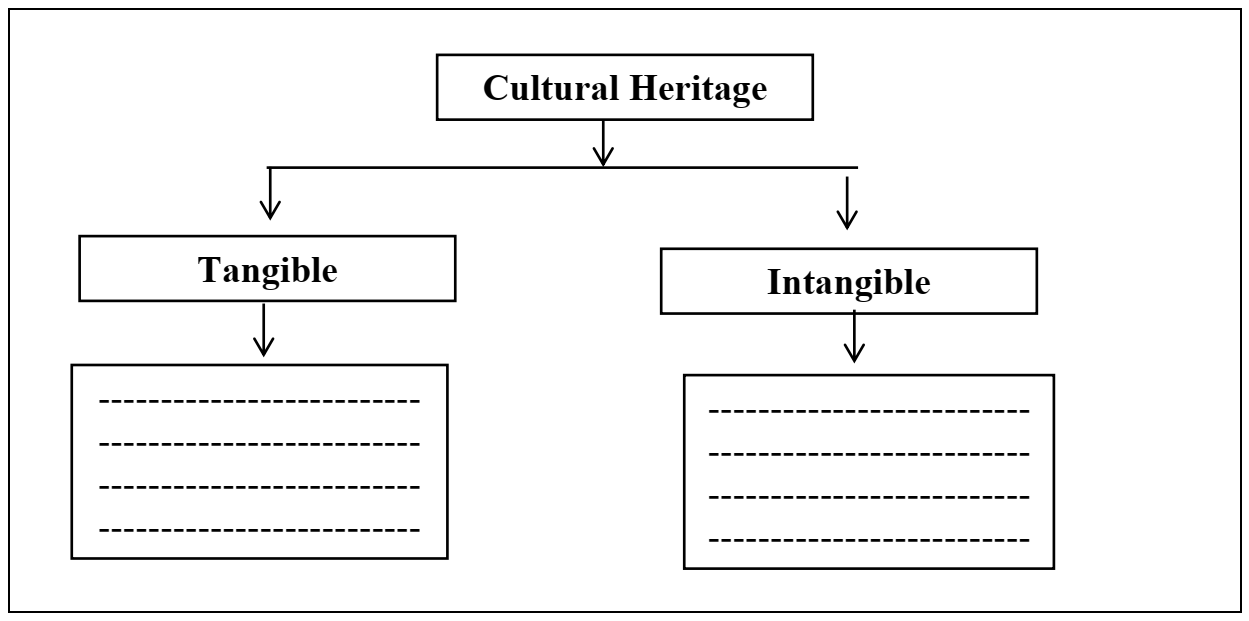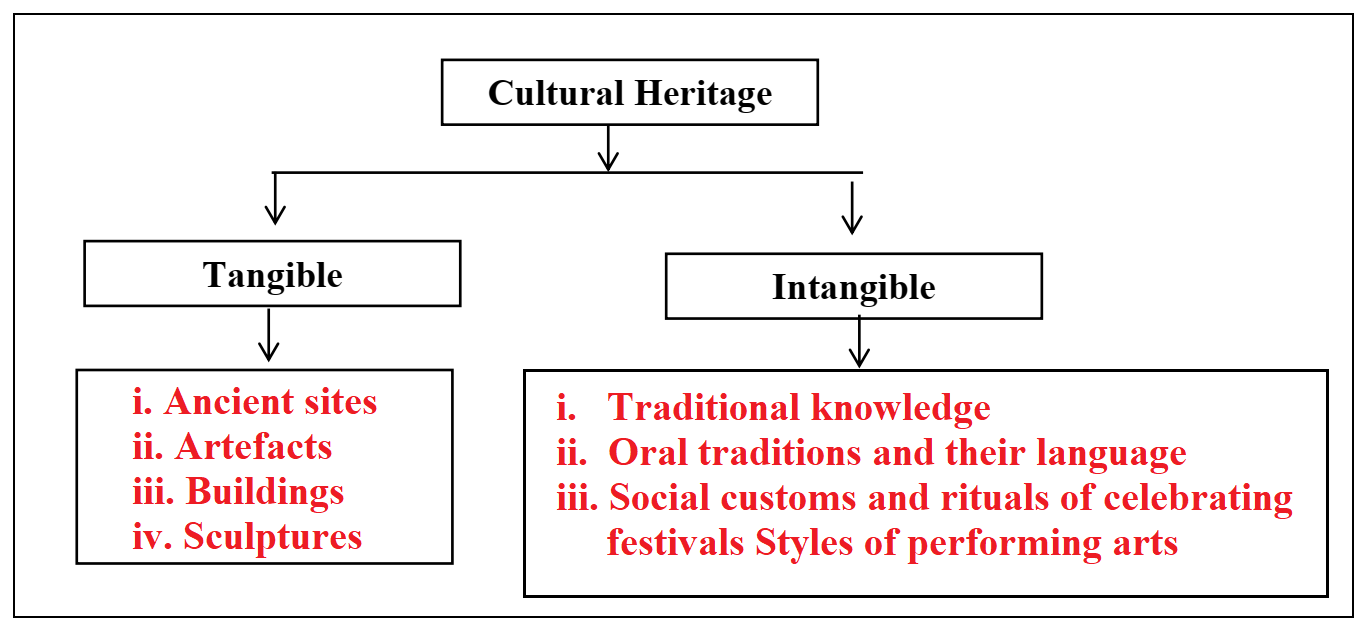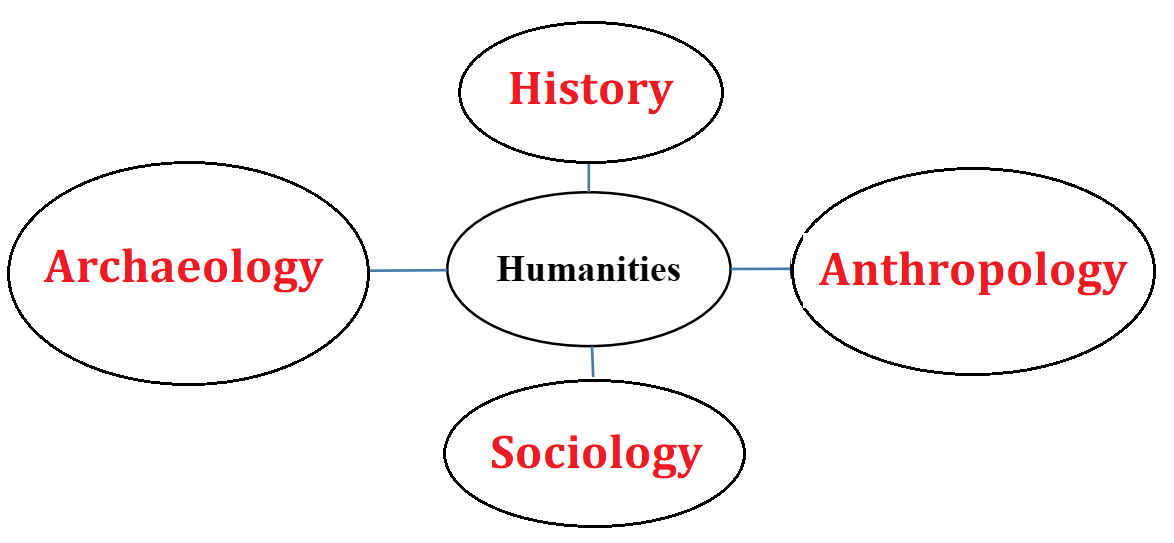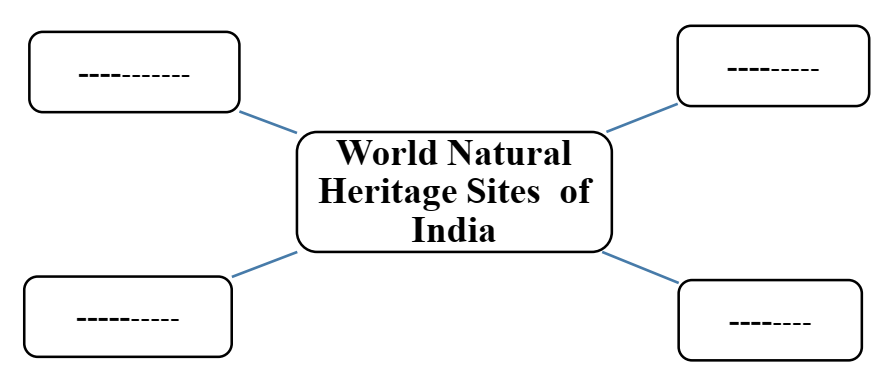3. Applied History
Q.l. (A) Choose the correct option from the given options and complete the sentences.
1. The earliest museum in the world was discovered in the excavations at the city of …………….
(A) Delhi (B) Harappa (C) Ur (D) Kolkata
2. The National Archives of India is in ……………
(A) New Delhi (B) Kolkata (C) Mumbai (D) Chennai
3. …………… is considered as the mother of science and all other subjects.
(A) Philosophy (B) Ethics (C) History (D) Genealogy
4. The main office of the National Film Archives of India is located in ……………
(A) Mumbai (B) Pune (C) Nagpur (D) Aurangabad
5. Kalbelia is a folk dance in the …………… state is part of the World Heritage List.
(A) Maharashtra (B) Punjab (C) Rajasthan (D) Tamil Nadu
6. The Kas Plateau in the Western Ghats is in the …………… district.
(A) Sangli (B) Kolhapur (C) Solapur (D) Satara
(B) Identify the wrong pair in the following and rewrite.
(1)
i. Kootiyattam – Sanskrit theatre, Kerala
ii. Ramman – Dance form in West Bengal
iii. Ramlila – Traditional Performance of the Ramayana in Uttar Pradesh
iv. Pradesh Kalbelia – Folk songs and dances of Rajasthan.
Ans: Wrong pair: Ramman – Dance form in West Bengal
(2)
i. Sun Temple – Konark
ii. Brihadishwar Temple – Chandigarh
iii. Mahabodhi Temple – Bodh Gaya
iv. Rani-ki-Vav – Patan
Ans: Wrong pair: Brihadishwar Temple – Chandigarh
(3)
i. Applied History – Public History
ii. Fauna and Flora – Natural Heritage
iii. Ancient sites – Intangible Cultural Heritage
iv. UNESCO – The list of World Natural Heritage
Ans: Wrong pair: Ancient sites – Intangible Cultural Heritage
Q2. (A) Do as instructed.
1. Complete the following concept map.

Ans.

2. Complete the following concept map.

Ans.

3. Complete the following concept map.

Ans.

Q. 2. (B) Write short notes on:
1. Applied History
Ans:
(1) Applied History, also known as ‘Public History’, is a field of study which is concerned with the application of history for the benefit of people in the contemporary and future times.
(2) For finding solutions to contemporary social issues and incorporating them in the social planning, knowledge of history is a must.
(3) Applied history gives opportunities not only to the technical experts but also to the common people enabling them to participate in the conservation and preservation projects.
(4) Knowledge of history is helpful in decision-making with regard to the respective legal provisions and public policies in the fields of museums & archives, preservation & conservation of historical site, tourism & hospitality and entertainment & mass media. These professional fields are affiliated to applied history.
(5) Every field requires expert personnel with specialised skills like the architects, engineers, historians, archaeologists, museum curators, sociologists, archive management professionals, legal experts, skilled photographers, etc. These experts are required to have sufficient knowledge of the ancient sites, the historical background of the structural remains and artefacts.
(6) There are various projects in the field of applied history, thus, creating various employment opportunities for these professionals.
2. Archives
Ans:
(1) The place where old documents, official records, old films, etc. are preserved and stored are called Archives.
(2) The National Archives of India located is in New Delhi.
(3) Besides, every state in India maintains its archives independently.
(4) Moreover, some archives are set up with a distinct purpose. For e.g., The National Film Archives of India established in 1964, serves as the media unit of the Ministry of Information and Broadcasting of the Government of India. It is headquartered in Pune, Maharashtra.
3. Indian Museum: Kolkata
Ans:
(1) Indian Museum located at Kolkata was founded by Asiatic Society in 1814 C.E.
(2) Nathaniel Wallich, a Danish Botanist, was the founder and the first curator of the museum.
(3) The three main departments of the museum are Arts, Archaeology and Anthropology.
(4) The affiliated departments of this museum are conservation, publication, photography, exhibition-presentation, model-making, training, library and security.
(5) It is the first museum in India.
4. National Film Archives of India
Ans:
(1) The National Film Archives of India established in 1964, serves as the media unit of the Ministry of Information and Broadcasting of the Government of India.
(2) The main office of National Film Archives of India is located at Pune, Maharashtra.
(3) The principal objectives of the National Film Archives of India are as follows:
a. To search and obtain rare Indian films and to preserve the heritage of Indian Cinema for the benefit of future generations.
b. To classify the important aspects of films, document data and undertake research relating to films.
c. To act as a centre for the dissemination (spread) of film culture.
5. Ur museum
Ans:
(1) The earliest museum (6th century B.C.E.) in the world was discovered during the excavations at the city of ‘Ur’ in Mesopotamia.
(2) It was excavated by Sir Leonard Woolley between 1922 and 1934.
(3) This museum was built by Ennigaldi, the princess of Mesopotamia. She herself was the curator of the museum.
(4) The clay tablets inscribed with the descriptions of exhibited artefacts is a noteworthy feature of this museum.
Q.3. Explain the following statements with its reason.
1. It is essential to study the history of technology.
Ans:
(1) At every stage of human evolution, man made use of different technologies. For e.g., the technology used for making stone tools differed from the technology used for agricultural production. Here the knowledge of both science and technology is essential to understand this development.
(2) Similarly, changes have also taken place in the field of agricultural production, commodity production, architecture, engineering, etc. This mechanisation of production was promoted due to the advancement of science.
Therefore to understand the development of mechanisation and the mutual dependence between science and technology, it is essential to study the history of technology.
2. The list of world Heritage Sites is announced by UNESCO.
Ans:
(1) It is important to preserve our rich heritage for the benefit of both, the present as well as the future generations.
(2) Similarly, it is also essential to preserve and conserve certain types of cultural and natural heritage which are on the verge of becoming extinct. For e.g., historical monuments, traditional knowledge, biodiversity, etc.
Hence, with the objective of promoting the cultural and natural heritage, UNESCO, the global organisation has announced some directives. On the basis of those directives, the list of World heritage Sites is announced by UNESCO.
3. The method of history can prove to be of value in the research of various fields.
Ans:
(1) History is the study of past events and these historical events relate to various fields such as politics, social & religious structure of a community, philosophy, technology & science, etc.
(2) Each of these fields has their own history of building knowledge. The direction of future development in every field is dependent on the state of available knowledge.
Hence, it is rightly said that, the method of history can prove to be of value in the research of various fields.
4. Knowledge of the history of science is useful.
Ans:
(1) In order to understand the chronological order of scientific discoveries, inventions and theories, it is essential to know the history of Science.
(2) History thus lets one understand the cause – effect chain that led to those discoveries and inventions and facilitates more such discoveries.
Hence, the knowledge of the history of science is useful.
Q.4. Read the following extract and answer the questions below.
Public History
People have lot of misgivings about the practicality of the knowledge of history. For example, history is usually thought as a field of interest only for historians and students wishing to pursue higher studies in the subject and not pertaining to practical life, history as a field of knowledge does not have any applicability to economically productive fields, etc. ‘Public History’ helps to overcome such misgivings and makes history meaningful in everyday life connecting people to history. There are many universities abroad, where various courses in ‘Public History’ are offered. Srushti Institute of Art Design and Technology is an institute at Bengaluru, Karnataka. This institute has an independent department, named, ‘Centre for Public History’. This department has taken up various projects and research in the field of public history.
1. What is Public History?
Ans: ‘Public History’, also known as ‘Applied History’, is a field of study which connects people’s everyday life to history.
2. Which institute has an independent department named ‘Centre for Public History’?
Ans: Srishti Institute of Art, Design and Technology (Bengaluru) has an independent department, named ‘Centre for Public History’.
3. Which are misgivings about the practicality of the knowledge of history?
Ans: Misgivings about the practicality of the knowledge of history are follows:
i. History is usually thought as a field of interest only for historians and students wishing to pursue higher studies in the subject and not pertaining to practical life.
ii. History as a field of knowledge does not have any applicability to economically productive fields.
Q.5. Answer the following questions in details.
1. How is the method of history useful in the research of
(a) Science (b) Arts (c) Management Studies
Ans: The method of history proves to be useful in order to carry out research in the following fields-
(a) Science:
i. In order to understand the chronological order of scientific discoveries, inventions and theories, it is essential to know the history of Science.
ii. History thus lets one understand the cause – effect chain that led to those discoveries and inventions and facilitates more such discoveries.
(b) Arts:
i. It is important to understand the development of various art forms and their foundation in the form of intellectual-emotional-cultural traditions.
ii. With the help of cultural history, we can understand the key to the expression in any art forms, emotional temperament of the artist and the developmental history of the respective art form,
(c) Management Studies:
i. Management Studies includes the study of various factors involved in the chain of production like the means of production, human resources, processes of production, the chain of market & sales management, etc. In order to understand these factors, it is necessary to have the knowledge of the similar functional systems of the past.
ii. The psychological character of people working at various levels in the chain of production and marketing is dependent on the understanding of the social and economic institutions that support the industrial and commercial processes.
Hence, it is important to study the history of these institutions so that in present, the management at the various levels becomes easier.
2. How can we correlate applied history with our present?
Ans: Introduction: Applied history is also known as ‘Public History’. It helps to overcome the misgivings and makes history meaningful in everyday life connecting people to history.
i. Applied History is a field of study which is concerned with the application of history for the benefit of people in the contemporary and future times.
ii. The visible and invisible relics of the past exist even in the present. We nurture some kind of curiosity, attraction towards these relics. We intend to know more about their history as they represent the creative thoughts and traditions of our ancestors.
iii. It is our heritage. It helps in building our identity. Our origin is linked with the history of our heritage. Hence, it is important to preserve and conserve both the visible and invisible relics for our benefit.
iv. Moreover, heritage management creates employment opportunities.
For e.g., opportunities arc created for historians, architects, archaeologists, museum curators, sociologists, skilled photographers, etc.
Conclusion: In short, the function of applied history is to understand our present with the help of history and to find right direction for the benefit of our future.
3. Suggest at least 10 solutions for preservation of the sources of history.
Ans:
Following are some of the solutions which can help in the preservation of the sources of history:
(1) Having a sense of belongingness towards the various art forms, customs, traditions, paintings, monuments, etc., created by our ancestors is the most important thing which is needed for the preservation of sources of history. One can develop this sense of belongingness by knowing the historical significance of various sources.
(2) While visiting any historical site, one should abide by the rules and regulations laid down by the organisations or institutes (for e.g., The Archaeological Survey of India or INTACH) which take care of those sites.
(3) An unbiased approach towards the writing of history will enable in preserving the authenticity of the historical events.
(4) Certain oral sources of history like folk songs, owis, powadas, etc. should be collected and preserved.
(5) Certain written sources of history should be reprinted so that it can be used in future for research.
(6) Certain photographs or audio-video cassettes, with the help of new technology should be recovered so that it can be used as a source of history.
(7) Efforts should be taken to learn the ancient extinct scripts like Brahmi and Modi, in order to enable one to reconstruct the history of our past.
(8) ‘Heritage Walks’ should be organised regularly.
(9) Through the medium of speeches, discussions, street play; the common people should be made aware.
(10) In order to create awareness among teachers and students in schools and colleges, ‘heritage club’ should be established. Also, awareness workshops should be conducted for them.
4. What objectives can be fulfilled through the heritage projects.
Ans: The objectives that can be fulfilled through the heritage projects are as follows:
(1) The operations needed for the conservation, preservation and development of the heritage site can be handled without causing any change in its original state.
(2) The local social structure and psychology of the local people, challenges faced by them in the present scenario and their expectations can be surveyed in detail.
(3) Proper precautions can be taken to avoid hurting sentiments of the local people while completing the project of conservation, preservation and development of a particular heritage site.
(4) Participation of local people in the project can be facilitated. Systematic plan can be designed in order to employ the local skills in a creative manner and create better opportunities of livelihood.
5. Describe the Affiliated Professional Fields related to the applied history and discuss the skills required for the management of these fields.
Ans.
(1) Applied history gives opportunities not only to the technical experts but also to the common people enabling them to participate in the conservation and preservation projects.
(2) Knowledge of history is helpful in decision-making with regard to the respective legal provisions and public policies in the fields of museums & archives, preservation & conservation of historical site, tourism & hospitality and entertainment & mass media. These professional fields are affiliated to applied history.
(3) Every field requires expert personnel with specialised skills like the architects, engineers, historians, archaeologists, museum curators, sociologists, archive management professionals, legal experts, skilled photographers, etc. These experts are required to have sufficient knowledge of the ancient sites, the historical background of the structural remains and artefacts.
(4) There are various projects in the field of applied history, thus, creating various employment opportunities for these professionals.